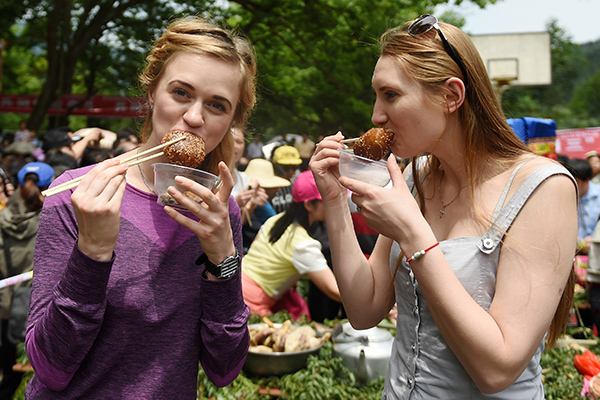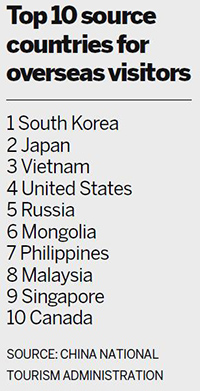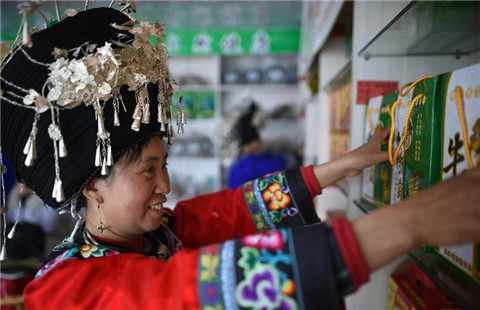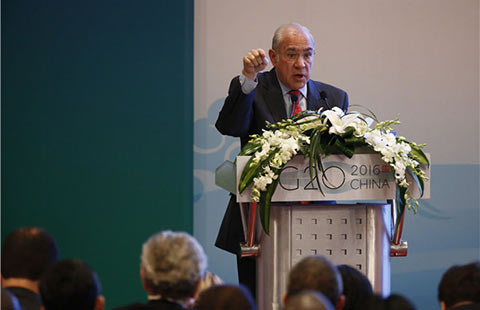Russian tourists rushing back to China
By Su Zhou (China Daily) Updated: 2016-03-01 11:34
 |
|
Two visitors from Russia taste local snacks in Rongshui, Guangxi Zhuang autonomous region. [Photo/Xinhua] |
After four years of decline, there was a huge increase in the number of Russian tourists visiting China in January, new figures show.
In total, 144,200 Russians visited in the first month of 2016-up 46.9 percent on the same period last year, according to a recent report released by the China Tourism Academy, a think tank under the China National Tourism Administration.

Russia is the fifth-largest source market for China's tourism industry after the United States, Vietnam, Japan and South Korea, but over the past few years a weak ruble has dampened Russians' enthusiasm for travel abroad.
Last year alone, the number of Russian tourists in China was down 22.7 percent year-on-year, according to the report
Xu Xiaolei, a spokesman for China Youth Travel Service, said the growth in Russian tourists this winter was not surprising, but it was still too early to predict a trend for the rest of the year.
"Many Russian tourists chose to spend the bitter winter in warm Hainan province. And to avoid the peak season of Chinese New Year, many booked their trips to China in January," Xu said. "Tourism watchdogs have also been tightening the regulation of Hainan's tourism products. Compared with the sky-high hotel prices last year, prices in Hainan are relatively low this year. This has also helped to attract more Russian tourists."
Xu said he expected the overall inbound tourism industry to maintain its pace of growth this year, after the number of inbound visits in January increased by 1.7 percent year-on-year to 11.1 million, according to the China Tourism Academy report
The China National Tourism Administration expects more than 137 million overseas tourists to visit China this year, an increase of 2.5 percent on the previous year.
According to its development goal for 2016, as set at the annual work meeting on Jan 29, international tourism revenue is also forecast to increase by 6.5 percent, reaching $121 billion.
If this happens, it will be the second consecutive year of growth for China's inbound tourism market following a period of decline from 2011 to 2014.
Li Shihong, deputy head of the administration, said second- and third-tier cities and small towns would play a leading role in attracting overseas tourists-highlighting Wuzhen, Zhejiang province, Yueyang, Hunan province and Tongli, Jiangsu province as examples.
"Second- and third-tier cities and small towns have unique cultural symbols, beautiful landscapes and have preserved history" better than modern cities, Li said. "All these are attractive factors for frequent visitors to China."
"Besides, the high-speed railway network has connected small towns and made them more accessible than ever before. It is a great time for them to develop their inbound tourism industry."
- LA sees influx of Chinese visitors
- Company threads its way to Middle East
- Jumei investors demand higher share buyback price
- Apple supplier Manz to sell 29.9% stake to Shanghai Electric
- Alibaba's Internet lender extends $6.88b in loans in 8 months
- Air China seals $2.9b deal with Airbus Group
- China's manufacturing, service activities both contract
- BMW sees China as dominant market for driverless cars
















